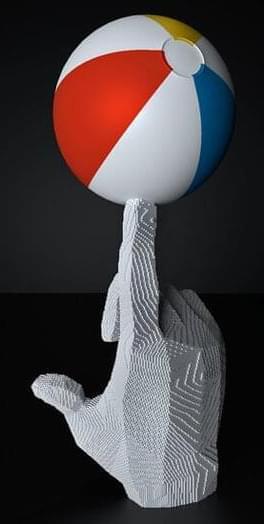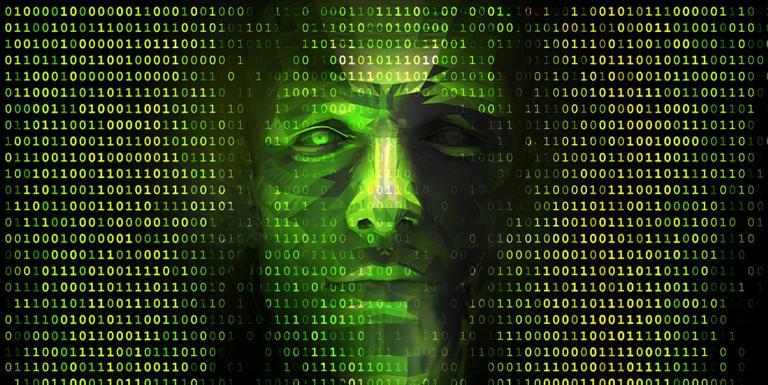In “The Singularity Is Nearer,” the futurist Ray Kurzweil reckons with a world dominated by artificial intelligence (good) and his own mortality (bad).


The singularity is already here.
Since that pioneering work first appeared, AI has become a household word, most dramatically since OpenAI’s iterations of ChatGPT began rolling out starting on November 30, 2022. Now, from smoke-analyzin g AI aiding firefighters in California, to instant AI translation of most languages, to almost daily AI innovations in health care, this technology is already central to our lives. Last year, private investment in AI was more than $25 billion, according to the Li’s Center at Stanford, an estimate I believe on the conservative side. By next year, annual AI investment will reach some $200 billion, according to Goldman Sachs.
At my company, data.world, we’ve been building the foundation of our platform for AI since our founding in 2016. We knew back then that data would be the essential feedstock of AI, the oxygen of its metabolism. And in a world where data grows exponentially, data silos, data errors, missing context, and sheer data deluge are the bane of many companies and institutions. Our mission is to transform data into tools of institutional cognition, the most recent advance of which is our AI Context Engine™. The most important product we’ve ever launched, this tool makes corporate data now inaccessible to AI an essential part of companies’ strategic toolkit. The chat-with-your-data future has never been closer than it is right now, and our AI Context Engine is our fastest new product takeoff in our company’s history.
So back to the journey that we are all on. Let’s explore the essentials of Nearer together in summary.

More than one singularity.
The singularity could soon be upon us. The PESTLE framework, developed by this episode’s guest Daniel Hulme, expresses not one but six types of singularity that could occur: political, environmental, social, technological, legal and economic. @JonKrohnLearns and Daniel Hulme discuss how each of these singularities could bring good to the world, aligning with human interests and pushing forward progress. They also talk about neuromorphic computing, machine consciousness, and applying AI at work.
Watch the full interview “807: Superintelligence and the Six Singularities — with Dr. Daniel Hulme” here: https://www.superdatascience.com/807
In the rapidly advancing field of artificial intelligence (AI), few voices resonate as profoundly as Dr Ben Goertzel’s. With a background in mathematics and decades of experience as an AI researcher, Ben’s insights into the future of AI and its convergence with human intelligence offer a compelling narrative.
This article goes into his perspectives as shared in the session IA générale: vers la singularité — avec Dr Ben Goertzel, exploring the technological singularity, the mainstreaming of transhumanist ideas, and the profound societal and philosophical implications of these advancements.
Ben Goertzel’s journey into AI began in the 1970s, when the concept of machines matching human intelligence was confined to science fiction. Today, however, we are on the brink of achieving this milestone. He expresses his excitement and trepidation about this development, highlighting the double-edged nature of such a revolutionary transformation.
Singularity net Ben goerzel discusses artificial and general intelligence and cosmist intelligence.
Dr. Ben Goertzel discusses artificial general, non-human and cosmist intelligences with Ed Keller at The Overview Effect Lectures, which is a series positioned as a survey of some of the key operational themes critical to post planetary and universal design.
Ed Keller’s Youtube Channel — / machinicphylum.
SingularityNET is a decentralized marketplace for artificial intelligence. We aim to create the world’s global brain with a full-stack AI solution powered by a decentralized protocol.
We gathered the leading minds in machine learning and blockchain to democratize access to AI technology. Now anyone can take advantage of a global network of AI algorithms, services, and agents.
Joscha Bach meets with Ben Goertzel to discuss cognitive architectures, AGI, and conscious computers in another theolocution on TOE.
- Patreon: / curtjaimungal (early access to ad-free audio episodes!)
- Crypto: https://tinyurl.com/cryptoTOE
- PayPal: https://tinyurl.com/paypalTOE
- Twitter: / toewithcurt.
- Discord Invite: / discord.
- iTunes: https://podcasts.apple.com/ca/podcast…
- Pandora: https://pdora.co/33b9lfP
- Spotify: https://open.spotify.com/show/4gL14b9…
- Subreddit r/TheoriesOfEverything: / theoriesofeverything.
- TOE Merch: https://tinyurl.com/TOEmerch.
LINKS MENTIONED:
- OpenCog (Ben’s AI company): https://opencog.org.
- SingularityNET (Ben’s Decentralized AI company): https://singularitynet.io.
- Podcast w/ Joscha Bach on TOE: • Joscha Bach: Time, Simulation Hypothe…
- Podcast w/ Ben Goertzel on TOE: • Ben Goertzel: The Unstoppable Rise of…
- Podcast w/ Michael Levin and Joscha on TOE: • Michael Levin Λ Joscha Bach: Collecti…
- Podcast w/ John Vervaeke and Joscha on TOE: • Joscha Bach Λ John Vervaeke: Mind, Id…
- Podcast w/ Donald Hoffman and Joscha on TOE: • Donald Hoffman Λ Joscha Bach: Conscio…
- Mindfest Playlist on TOE (Ai and Consciousness): • Mindfest (Ai \& Consciousness Conference)
TIMESTAMPS:
- 00:00:00 Introduction.
- 00:02:23 Computation vs Awareness.
- 00:06:11 The paradox of language and self-contradiction.
- 00:10:05 The metaphysical categories of Charles Peirce.
- 00:13:00 Zen Buddhism’s category of zero.
- 00:14:18 Carl Jung’s interpretation of four.
- 00:21:22 Language as \.
And this shows one of the many ways in which the Economic Singularity is rushing at us. The 🦾🤖 Bots are coming soon to a job near you.
NVIDIA unveiled a suite of services, models, and computing platforms designed to accelerate the development of humanoid robots globally. Key highlights include:
- NVIDIA NIM™ Microservices: These containers, powered by NVIDIA inference software, streamline simulation workflows and reduce deployment times. New AI microservices, MimicGen and Robocasa, enhance generative physical AI in Isaac Sim™, built on @NVIDIAOmniverse
- NVIDIA OSMO Orchestration Service: A cloud-native service that simplifies and scales robotics development workflows, cutting cycle times from months to under a week.
- AI-Enabled Teleoperation Workflow: Demonstrated at #SIGGRAPH2024, this workflow generates synthetic motion and perception data from minimal human demonstrations, saving time and costs in training humanoid robots.
NVIDIA’s comprehensive approach includes building three computers to empower the world’s leading robot manufacturers: NVIDIA AI and DGX to train foundation models, Omniverse to simulate and enhance AIs in a physically-based virtual environment, and Jetson Thor, a robot supercomputer. The introduction of NVIDIA NIM microservices for robot simulation generative AI further accelerates humanoid robot development.
Build a whole new world wide civilization that will be like atlantis of legend a scientifically advanced and technological wonderland after the singularity.
Disclaimer: All rights reserved to Legionarii. The image and audio track remain the exclusive property of the group.
—
The unreleased song (meant to be part of Disciples of the State) of Atlantis. It wasn’t available anywhere in Youtube, so I have added it now.
This song was re-mixed more recently and titled “The Promethean Flame”, which can be found in Legionarii’s official youtube channel.
I have added the original Atlantis version just so people can compare the two different mixes.